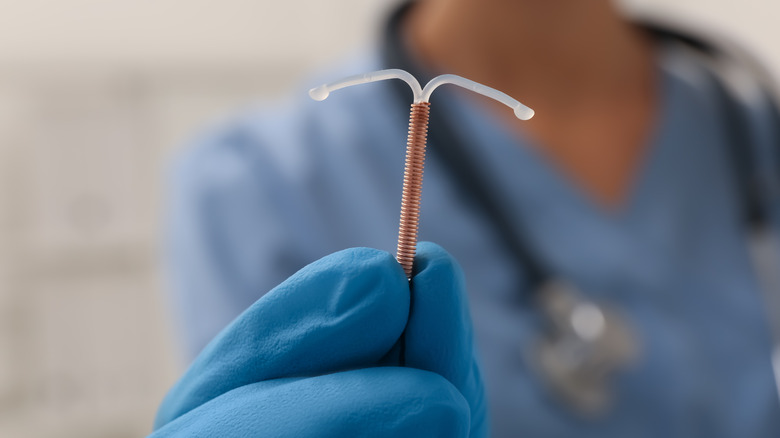Why You Should Never Take Out An IUD Yourself
Intrauterine devices, or IUDs, are one of the easiest and most effective types of birth control available, according to Cleveland Clinic. These small, T-shaped devices are placed in the uterus, where they can remain for up to 10 years, depending on the brand.
IUDs prevent pregnancy in one of two ways: copper devices are toxic to sperm and stop them from reaching the egg, while hormonal IUDs thicken cervical mucus, stopping sperm from traveling through it. In either case, IUDs are nearly 100% effective at preventing unwanted pregnancy when inserted correctly.
While this type of birth control can be conveniently forgotten about for at least a few years, there are some instances where earlier removal makes sense. WebMD explains that you may need to remove your IUD if you're experiencing uncomfortable side effects, you have a sexually transmitted infection, you've become pregnant, or the IUD has moved or been damaged. You may also wish to remove your IUD if you want to get pregnant or decide to try a different birth control method.
IUD removal is a fairly fast and easy procedure, typically requiring only a few minutes on a doctor's office table. The process seems so easy, you may consider doing it yourself at home. However, trying to remove your device on your own may do more harm than good for your health.
Trying to remove your own IUD could cause serious complications
If you try a solo approach to IUD removal, you'll likely run into trouble. A 2014 study published in the journal Contraception found that only one in five women who tried to remove their devices by themselves were successful. And failed attempts can be more than just a source of frustration — they might cause damage to your body or your IUD.
Gynecologist Ashley Brant shared with Cleveland Clinic that many women dislodge their devices but are unable to remove them. Then, the IUD may cause pain and cramps and will no longer be effective at preventing pregnancy. In this case, you'll need to see a healthcare provider as soon as possible.
You may also attempt to remove an IUD that has become misplaced without your knowledge. Gynecologist Kimberly Langdon told Healthline that trying to remove an IUD in this situation could result in injury and scarring, and increase the risk of infections such as pelvic inflammatory disease.
For these reasons, it is best to make an appointment with a doctor to have your IUD professionally removed. According to Healthline, free or affordable services can be found at Planned Parenthood, health departments, nonprofit health clinics, and college healthcare centers.


